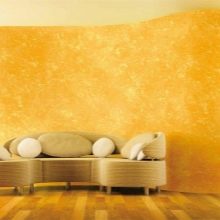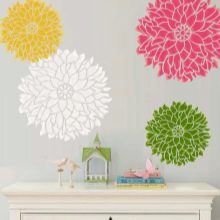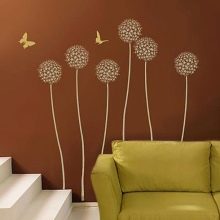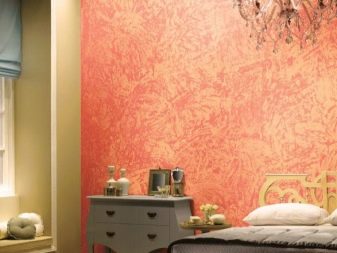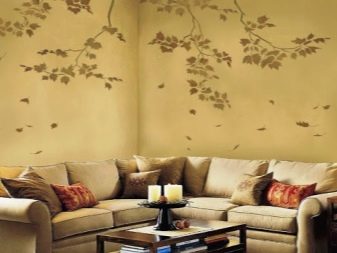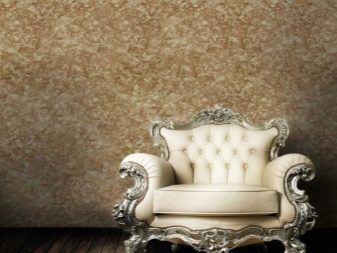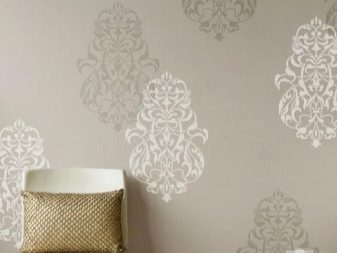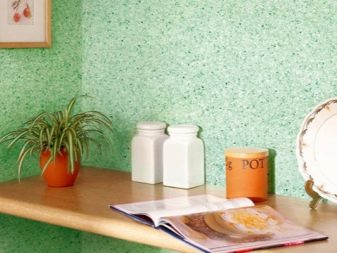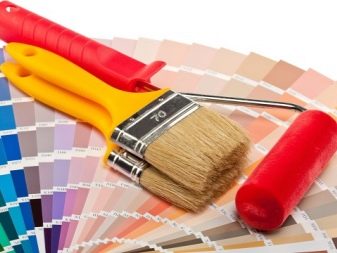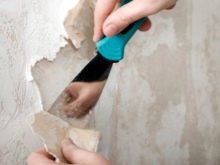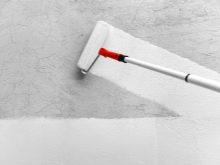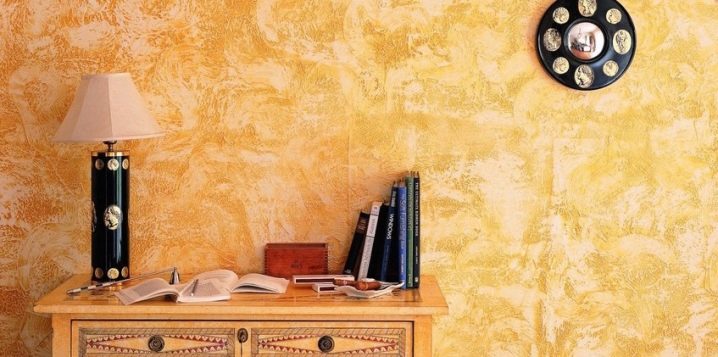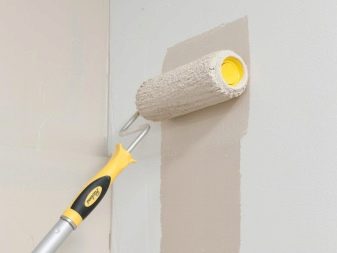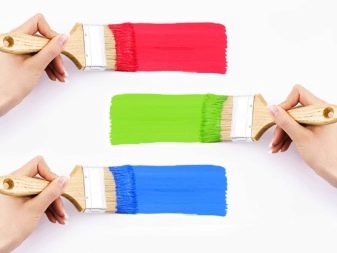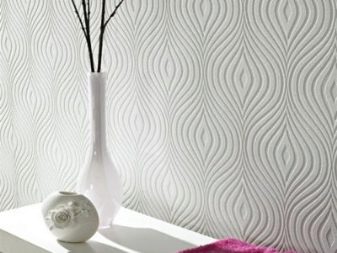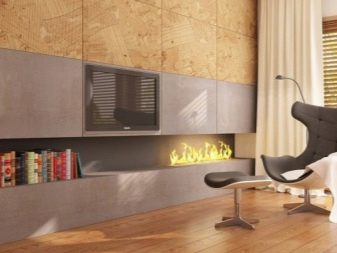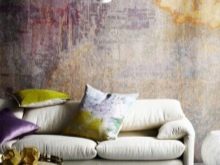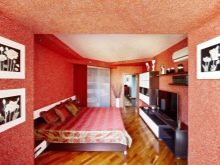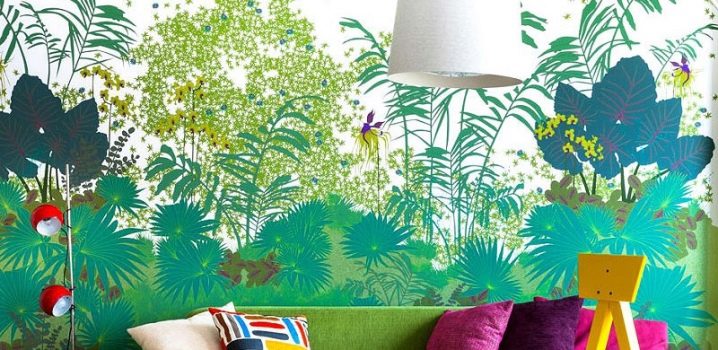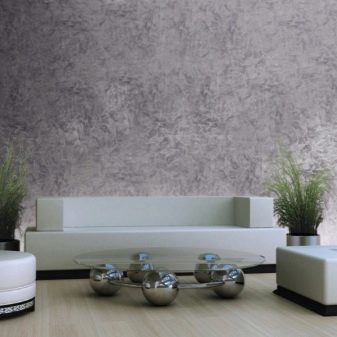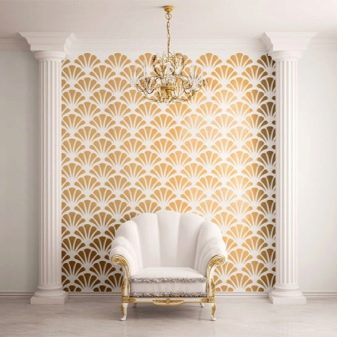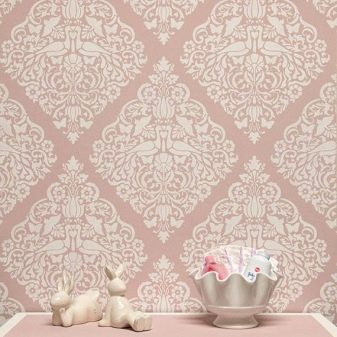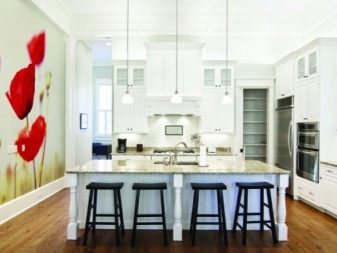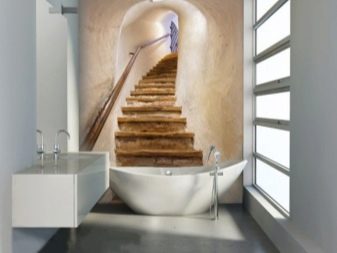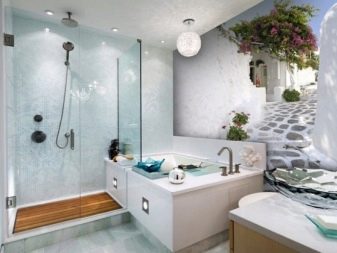The subtleties of decorative painting walls
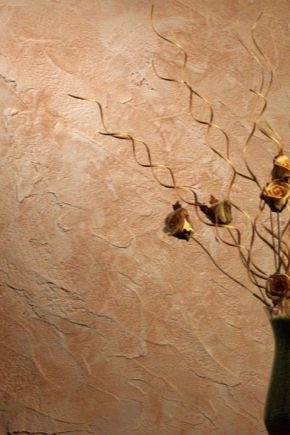
The decorative painting of walls made by hands will be able to improve not only the interior of the room and give free rein to your imagination, but also help to significantly save on finishing. Recently, this method is gaining increasing popularity, and this is not at all due to low costs, but for reasons of originality and beauty. Even with a lack of imagination, painting your own hands can turn out original and memorable.
It is also important that all this can be done with tools purchased in the nearest building supermarket, and even use those that you can do with your own hands to create your drawings or interspersed.
Advantages and disadvantages
Like any process associated with the repair, decorative painting of walls also has its advantages and disadvantages.
Let's start with the good sides:
- This is a relatively inexpensive price for tools that are just a brush or a texture roller.
- The variety of choice of colors, which includes not only the abundance of different colors, but also the consistency, compositions, durability and texture of which also vary greatly.
- The originality of the picture, which can be your pride thanks to the uniqueness and showiness.
- Safety, which is achieved through the selection and use of paints that do not bring harm to health after complete drying, which is important for apartments with young children.
- Additional coatings that you can apply as you wish: as an antistatic or easily washable coating; for drawing a pattern which will not demand special leaving too.
- The durability of the pattern and patterns in contrast, for example, from the same wallpaper.
- The relative ease of performing decorative painting, as for the process of drawing a picture fit any surface, not just the walls and ceiling.
Of the minuses: the main thing is the laboriousness of the process at the stage of preliminary preparation of the surface, which should be smooth, that is, plastered and filled.
Types of paints
What types of paints are there and how to apply them in such a way that the pattern you conceived will turn out, we will consider further.
Best to give preference water-based paints for their long service life: that is, they do not lose their color even from exposure to sunlight, they dry quickly and are unpretentious in operation.
Their range can be divided into 3 main groups:
- These are paints with special special effects, such as leather or nacre.
- So called mosaicwhich, because of their structure, create a granular pattern on the wall, they can be applied with a roller or a spray gun.
- The main ones are flock coatingscontaining acrylic microparticles. They give the treated surface different shades depending on the angle of location or lighting. The application process requires the primary application of a water-based paint, after drying of which a flock coating is applied with a spray gun or a special gun, after 12 hours an acrylic varnish is applied, which will be very convenient in the future for wet cleaning.
Coloring process
First of all, especially if you do everything yourself,It is important to paint in the warm season, if possible to maintain a constant temperature and humidity in the room, the latter should be especially taken into account when painting the ceiling.
Otherwise, the entire process of applying paint, no matter - with a roller, brush or spray, remains standard, as with all other finishing materials. As a rule, decorative paint application involves applying two layers, this is the first - the primary color, and the second - the tone or pattern.
Preparatory work
Before you begin, you need to take out the furniture or other interior details to avoid their damage, you can cover them with a film, such as the floor. The same applies to the person involved in this business: since safety is paramount, you should prepare a protective suit, gloves and, of course, glasses in advance - all this can be purchased at a not very high price in the nearest building supermarket.
From the tools, you will need only a roller and / or a brush for applying all layers, a container and a tool for applying a texture or pattern.
Directly the process of preparation includes the following steps:
- First of all, you need to clean the treated surface from the previous applied layers, you need to consider that even removing the wallpaper will not be enough, and you will need to remove all the applied coatings.
- Putty, which evens the surface, because without this stage all defects may become more noticeable.
- The final stage is a primer that creates a stronger “adhesion” between the surface and the coloring composition, is a kind of “foundation” for the creation of a future pattern. We should also mention penetrating primer, it will provide better adhesion and keep the surface from penetration of liquids, such as water.
Before you begin to decorate the walls, it should be noted that the walls of concrete are the easiest to process. They are not capricious in operation and are easily processed at the initial stage. You can not say about the wooden walls, which will require more thorough preparation: first you need to check for cracks, fungi or other pests. The tree must be completely cleaned and processed before painting.
Application Methods
There are many options for applying decorative painting.
- Roller. It can be both texture for the pattern, and usual for applying a base layer. To date, there is a large abundance of rollers with a different pattern in building supermarkets, and in online stores with special wishes, it can even be made to order.
- Brushwhich is necessary when applying the base layer, especially in hard to reach places. A brush can be applied to a special pattern in the form of strips or to apply strokes, which will also look impressive. Depending on the degree of brightness of your intended pattern, the brush can be moistened not quite abundantly for translucent pitch, it can be wetted well to cover it completely. It is best to paint the surface at a time, otherwise it threatens with unevenly colored areas.
- Stencils of various sizes and drawings. For smaller stencils, it remains to use only a brush, not a roller. Even after using a stencil pattern, you can draw details. The important point is to remove the stencil before drying in order to avoid tearing it or sticking to the wall.
- The use of glass fiber. This is a wallpaper that is woven from glass fiber like a fabric.One of its biggest advantages is fire safety, that is, when a fire occurs, the material does not emit toxic substances. Glass fiber is easy to paint and lasts for a very long time, and is also almost not damaged when scratches and other mechanical effects are applied.
- Using RSD, that is, oriented strand board can be a good alternative to the use of wood in the design of the room. But it should be borne in mind that it can only be used in rooms with low humidity, since this material consists of wooden shavings. The main advantage is its not high price.
- Self-made tools. They can be made with your own hands from improvised means, the most popular of them are foam sponge and cloth knots attached to the roller. Here you will be helped by your imagination and the result that you expect from your design.
Some examples of brush drawing:
- Spray effect. One of the simple ways to design walls is done with a spray brush. It is advisable to use no more than three colors for more harmonious susceptibility.
- Marble effectwhich is also achieved by manually applying a pattern with small brushes.
The processing of the ceiling is unique mainly because of the abundance of ideas for its design and the subsequent effect, since the ceiling can not only reduce and increase the size of the room, but also drastically change the atmosphere and perception of the room.
As examples, completely changing the room, you can bring a mirror-coated ceiling or mosaic. The decoration of the ceiling can advantageously complement the painting of your walls.
Beautiful examples
Usually, painting on your own is done for your own rooms or bedrooms - it can also include exclusive ideas. It is in these cases that it will be possible to try out all the methods of the original coloring given in this article. Here are a few options, styles and basic combination rules.
First you need to decide on the choice of style. It will help you create the atmosphere you want, and determine the choice of colors.
There are several basic styles:
- High tech. It combines both minimalism and light colors.
- The Empire style contains gold and beige shades with a raised ceiling.
- Baroque, which will create an atmosphere of tranquility and "centuries-old", includes three most noble shades, mainly burgundy, black and brown.
- Provence, with which the room will be in the spirit of a country room, with its light floral shades.
But the style can be only your idea, embodied in reality.
A good and original solution in decorative painting walls with their own hands can be zoning a room by color or even individual details in the form of OSB tiles to imitate wood.
Next, we consider examples of wall decor in various rooms:
It is the kitchen that is a good example, as it always needs various materials to cover. A good option for wall decor in the kitchen is wallpaper. They will give the kitchen the spirit and atmosphere of something light and romantic, or bright and energizing. The working part is always broken by a tile, tile or decorative stone to facilitate the cleaning process. Loose walls are best painted in light and pearl colors, and notes of dark red will give the kitchen a gloss and comfort.
The same special case is the decor of the bathroom.Here, the absolute requirement for coatings is moisture resistance. The choice should fall on moisture-resistant paints, which are produced by the manufacturer under a different label that is different from the usual paint. As an unusual solution, you can apply a 3D image that has become popular relatively recently.
The purpose of decoration is to create a single style, a “complete thought,” then even the craziest decisions will become an elegant and appropriate addition.
In the next video you will find a master class on applying a decorative coating on the walls of plasterboard.
